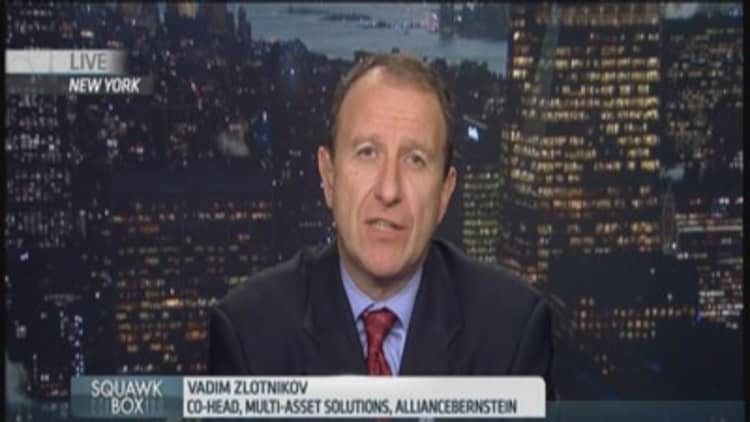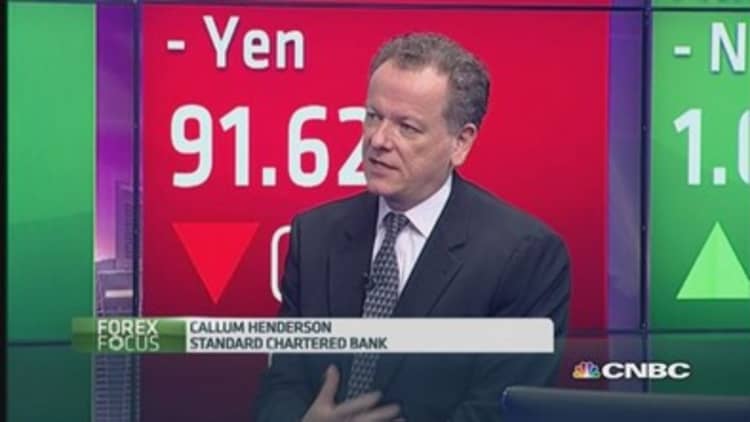From Switzerland to Singapore, central banks around the world kept markets on their toes with unexpected policy moves January, and economists say the surprises aren't going to stop there.
Last month alone, central banks in India, Egypt, Peru, Denmark, Canada and Russia announced surprise interest rate cuts. This came alongside Switzerland's unanticipated decision to scrap its three-year-old cap on the franc and Singapore's off-cycle move to tweak its exchange rate policy in order to ease the rise of the local currency.
On Wednesday, the People's Bank of China surprised markets on Wednesday by cutting the reserve requirement ratio (RRR) by 50 basis points to 19.5 percent - its first country-wide RRR cut since May 2012.
"We expect more central banks to surprise with either the timing or size of any monetary policy easing," said Rob Subbaraman, chief economist and head of global markets research, Asia ex-Japan at Nomura.
Within Asia, central banks in China, Thailand, Korea, India, Indonesia and Singapore are the ones to watch, he said.
The dynamics
The backdrop of disinflationary pressures, a slowing China, and faltering exports may force central banks to act off-cycle, Subbaraman said.

These dynamics have become increasingly clear in the past couple of months.
"Thailand has recently joined Singapore in outright CPI (consumer price index) deflation; Korea, excluding the one-off tobacco price hike, is very close to deflation, as is Taiwan. Most other countries are facing low-flation or steep declines in inflation," he said, citing India and Indonesia.
Meanwhile, economic powerhouse China, a key source of demand for smaller economies in the region, started the year on a sluggish note.
Read MoreWhy surprise parties are central banks' new thing
The country's Purchasing Managers' Index (PMI) data for January signaled the manufacturing sector is once again losing steam. The government's official PMI dipped into contractionary territory for the first time in two and the half years, coming in at 49.8 and surprising market watchers who were expecting expansion.
Finally, Asia's export engine appears to be sputtering. Korea – the first country in Asia to release January trade data – saw exports shrink 0.4 percent on year in January.
The next central bank to spring a surprise
In China, following Wednesday's surprise move, Subbaraman expects 50 basis point RRR cuts in each of the remaining quarters of 2015 and a 25 basis point interest rate cut in the second quarter.
In Korea, where he expects the central bank to cut interest rates by 25 basis points in April and July, there's a risk they could come earlier.
In India, where he expects only one more 25 basis point rate cut this year – in April – there's a chance there could be more.

In Indonesia, where he forecasts a 50 basis point rate cut in the first quarter of 2016, there's a risk it could be brought forward to this year.
Finally, in Singapore, which pre-emptively decreased the slope of its Singapore Dollar Nominal Effective Exchange Rate policy band, there's a 20-30 percent chance of further easing at its semi-annual monetary policy review in April, he said.
The surprising trend
Taimur Baig, Chief Economist, Asia at Deutsche Bank says the trend of off-cycle actions reflectsgrowing nervousness and urgency among central bankers.
"Asian central banking counterparts are not sitting by idly while ECB (European Central Bank) and SNB (Swiss National Bank) dominate headlines; we have seen the RBI (Reserve Bank of India) and the MAS (Monetary Authority of Singapore) make off-cycle policy moves lately, reflecting a sense of urgency to act not seen in a while," he said.
Read MoreAsia on central banks, China watch this week
These developments are out of the ordinary, said Baig, given the world's largest economy is heading closer to normalizing monetary policy.
"As seen in the early-80s and mid-90s, a U.S. rate hike cycle pushes capital out of the EM(emerging markets), puts currencies under pressure against the USD, and invariably causes debt service capacity to be stretched for many corporate and sovereigns with currency mismatch on their balance sheets," he said.
Chastened by the negative outcomes of past episodes, policymakers should be thinking about rate hikes, not cuts, he said. However, easing inflation and lackluster external and domestic demand have shifted dynamics this time around.


